Strand7 plate elements support the following attributes:
|
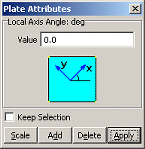 |
Local angles may be assigned to arbitrarily orientate
the local x-y axis system on the plane of the plate. This allows consistent
application of attributes such as face shear stress and pre-stress and for the
meaningful extraction of local element stresses at nodes common to multiple elements.
The local axes may be assigned manually by defining the required angle, or by
using one of the aligning tools. The align tools permit the automatic alignment
of the local axes along any global or user-defined coordinate system. For
aligning the axes along an arbitrary surface, the draping tool may be used.
This is particularly useful for the analysis of laminated composites. |
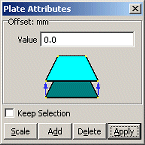 |
Offsets may be applied in the local z-axis direction of
the plate. The local z-axis is normal to the plate's surface. |
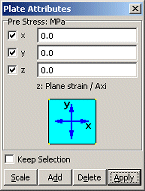 |
Pre-stress or pre-strain may be assigned in both the local x and y-axes. |
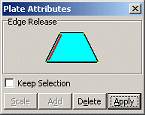 |
Edge Release. Similarly to the beam elements, plate element edges may release their rotational stiffness along an edge, effectively generating a hinged edge connection. This simplifies the modelling of hinged connections.
|
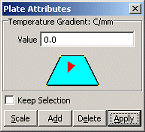 |
Temperature gradient may be defined through the thickness
of the plate. This models one surface hotter than the other. |
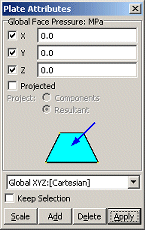 |
Surface pressure may be assigned normal to the plate surface,
in the global coordinate system and in a user-defined coordinate system. For pressure
that is aligned with a global or user-defined system, the Act on Projected Area
attribute provides a convenient way of applying the pressure over the projection of the
element, onto the relevant plane. |
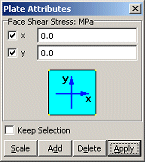 |
Surface shear stress may be applied in the direction of the
plate's local x and y axes. |
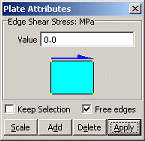 |
Edge pressure, edge shear stress and edge normal shear stress
may be applied to the edges of plate elements. Edge pressure acts normal to the edge,
in the surface of the plate. Edge shear acts along the plate's edge and edge normal
shear acts in the direction of the local z-axis (i.e. normal to the surface of the
plate). |
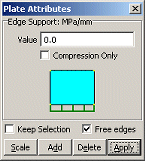 |
Elastic supports may be assigned on both the surface and
edges of plate elements. These provide a means of modelling plate elements sitting
on elastic foundations or semi-infinite spaces. For nonlinear analysis, the
Compression only option may be used. |
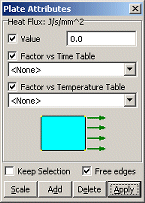 |
Thermal flux may be applied to any edge of a plate, for
use in heat transfer analysis. |
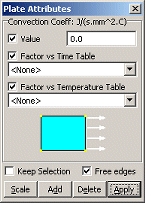 |
Convection and radiation coefficients are used in heat
transfer analysis for exchanging heat between the edge of the plate and an
external source. In nonlinear heat transfer analysis, the coefficients may be a
function of temperature. The ambient temperature of the external source may
be a function of time in transient heat analysis. |
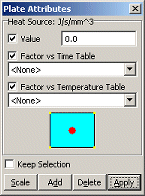 |
Heat source attributes provide a mechanism for the
generation of thermal energy within the plate element. For steady heat analysis,
the heat source is constant. For transient heat analysis, the heat source may
be a function of time. In nonlinear heat transfer analysis, the heat source may
be a function of temperature. |













 Menu
Menu